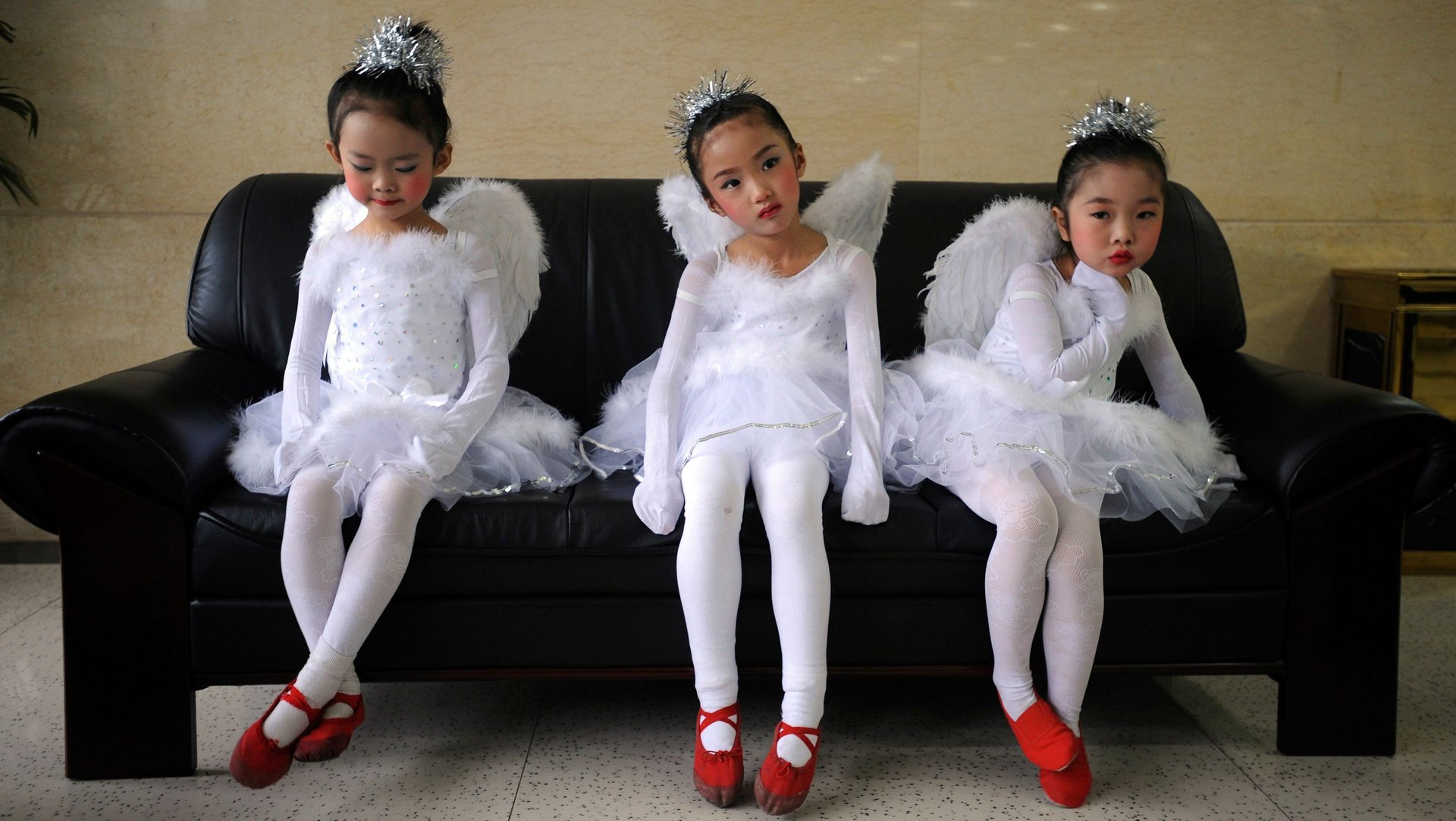Middle children are finally getting the appreciation they deserve
Middle children are increasingly rare in the US—but their scarcity seems to be adding to their allure.


Middle children are increasingly rare in the US—but their scarcity seems to be adding to their allure.
As Adam Sternbergh explains in a recent article for New York Magazine’s The Cut, the middle child is disappearing as Americans trend toward smaller families. Nearly two-thirds of US women with children now have one or two kids, down from 35% in 1976.
Yet while Americans may be having fewer kids, they certainly seem to find at least the idea of a trio appealing. As the Pew Research Center notes, a recent Gallup survey found that 41% of US adults think families with three or more children are ideal, a share that hasn’t been this high since the late 1990s.
What to make of the apparent disconnect between Americans’ attitudes toward family size and their realities? The answer comes down to the changing state of the US economy.
US attitudes toward family size
During and after World War II, a clear majority of Americans said that three or more children was their ideal number. But over the course of the 1960s and 1970s, the appeal of bigger families underwent a steep decline, as illustrated by the chart below:
The state of the economy is one reason for the evolution of demographic attitudes in the US, according to Pew. Americans’ preference for families with three or more children reached a low of 28% in 1986, after multiple recessions shook the country between July 1981 and November 1982. Today, the lack of affordable childcare and concerns about the economy are among the most-cited reasons that young adults offer for having fewer children than they’d like, as a recent New York Times and Morning Consult survey explains. Meanwhile, as Sternbergh writes for The Cut, a larger family is often a sign of financial security and economic confidence: “Three kids—which a generation ago was considered a slightly smaller brood than ideal—now seems aspirational, even decadent,” he writes.
Educational attainment is another factor that influences how many children families have. On average, the more educated a woman is in the US, the fewer children she will have in her lifetime. But as Pew notes in its report, that educational gap in fertility is narrowing: Highly educated women are increasingly opting to have families of three or more kids, and childlessness among all American women ages 40 to 44 is at its lowest point in a decade.
That doesn’t mean that US parents are rushing to recreate Cheaper by the Dozen anytime soon. Highly educated adults are still less likely than those with no college degree to say that having three or more children is ideal, according to Gallup. And there is no denying that the longer-term demographic trend has been toward much smaller American families. So what does that mean for the fate of middle kids?
The resurgence of the middle child
Many people believe that the order in which you are born has a big influence on your personality. That theory is more than a little controversial: Writing for Quartz, Jenny Anderson notes “there is little science to back up” the idea that birth order determines the kind of people we become. In fact, in the last decade, two studies have debunked that idea.
That said, Catherine Salmon, a professor of psychology at the University of Redlands and expert on middle children, says that birth order is best thought of as one of the many environmental factors that shape who people become. “If we think that almost all traits and all aspects of behavior are a combination of genes and environment,” she explains, “birth order is only one part of the environment.”
Middle children, as Sternbergh notes, have often gotten a bad rap in pop culture—dismissed as jealous, easily forgotten Jan Brady types. But he argues that middleness is increasingly understood as a strength, rather than a complex:
In this revisionist school of middleness, for example, middle children are seen as skilled diplomats by virtue of being stuck between two siblings. They’re portrayed as loyal romantic partners and friends, because they are both hungry for intimate bonds and willing to compromise to maintain relationships. And they’re believed to be natural innovators, since they’re less likely to feel the weight of parental expectation.
It’s implausible to think that any amount of good PR for middle kids will reverse a demographic decline decades in the making. But Salmon says that we should be making an effort to pass the diplomatic traits they’re known for onto all children, irrespective of their birth order. “We live in a world now where we have an awful lot of conflict,” Salmon added. “Some of the negotiating and peacekeeping skills [of middle children] seem to be in short supply these days.”